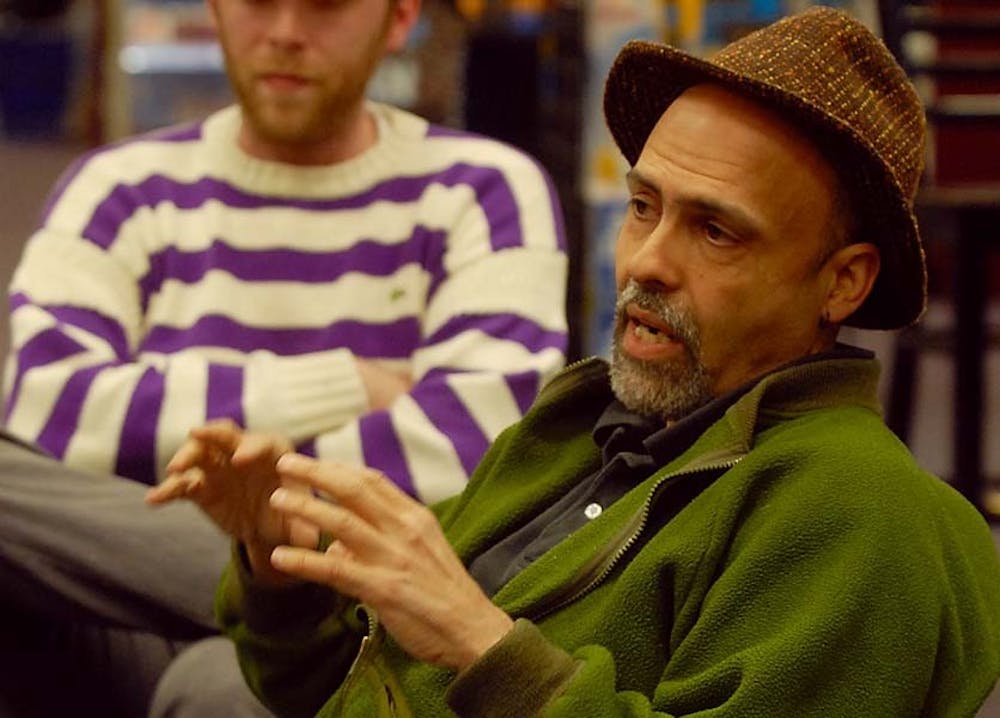Graffiti is ugly.
And Hugo Martinez, a leading authority and gallerist of graffiti, thinks that's exactly how it should be.
"It's art, whether you like it or not, whether it's pretty or not, whether it's legal or not," Martinez said. And the ugliness of graffiti makes it all the more powerful.
Presenting his new book, Graffiti NYC - which, as the title suggests, documents graffiti in New York City - Martinez sat down last night at the Penn Bookstore with an intimate audience and one of the artists featured in the book to discuss the past, present and future of this misunderstood art form.
Forgoing the podium and microphone in favor of a chair in the audience, Martinez, his jeans speckled with paint, played off of audience questions and interruptions to lead the presentation.
He began with a short history of graffiti, which was born from the working classes of New York City, mostly among the poor black and Puerto Rican teenagers who had "one paragraph in the history books." As an alternative to gang life, graffiti was "all they had," Martinez said.
Specifying that graffiti is "just names," Martinez explained that graffiti is a form of "self-advocacy," a way for those with nothing to lay a claim to something.
Graffiti "is not about decorating anyone's property," he said. "It's about appropriation."
Someone in the audience piped up: "Getting your name up there no matter what?"
Martinez nodded. Exactly.
So, when asked his opinions on New York street art, or the Philadelphia mural arts program, Martinez was not shy about his disdain. He openly expressed distaste for "aesthetic prettiness" and "corny" legal graffiti.
"Once you give somebody permission, you start getting decorative elements, and the power and the energy is gone," he said.
What makes "real" graffiti so powerful, he continued, is its rawness, its relationship to its canvas, the city.
"Let me do 7,000 pieces all over the city. Let me take over as much as I can," Martinez said. "Now I'm a graffite."
College senior Nick Beck was intrigued by Martinez's evaluation of graffiti-related art forms, and, while he finds aesthetic value in both graffiti and street art, he agrees with Martinez that graffiti is "more challenging and comes from a deeper place" if for no other reason than that it requires a willingness to risk jail time.
Besides, Martinez said, legal graffiti is "just crap."



